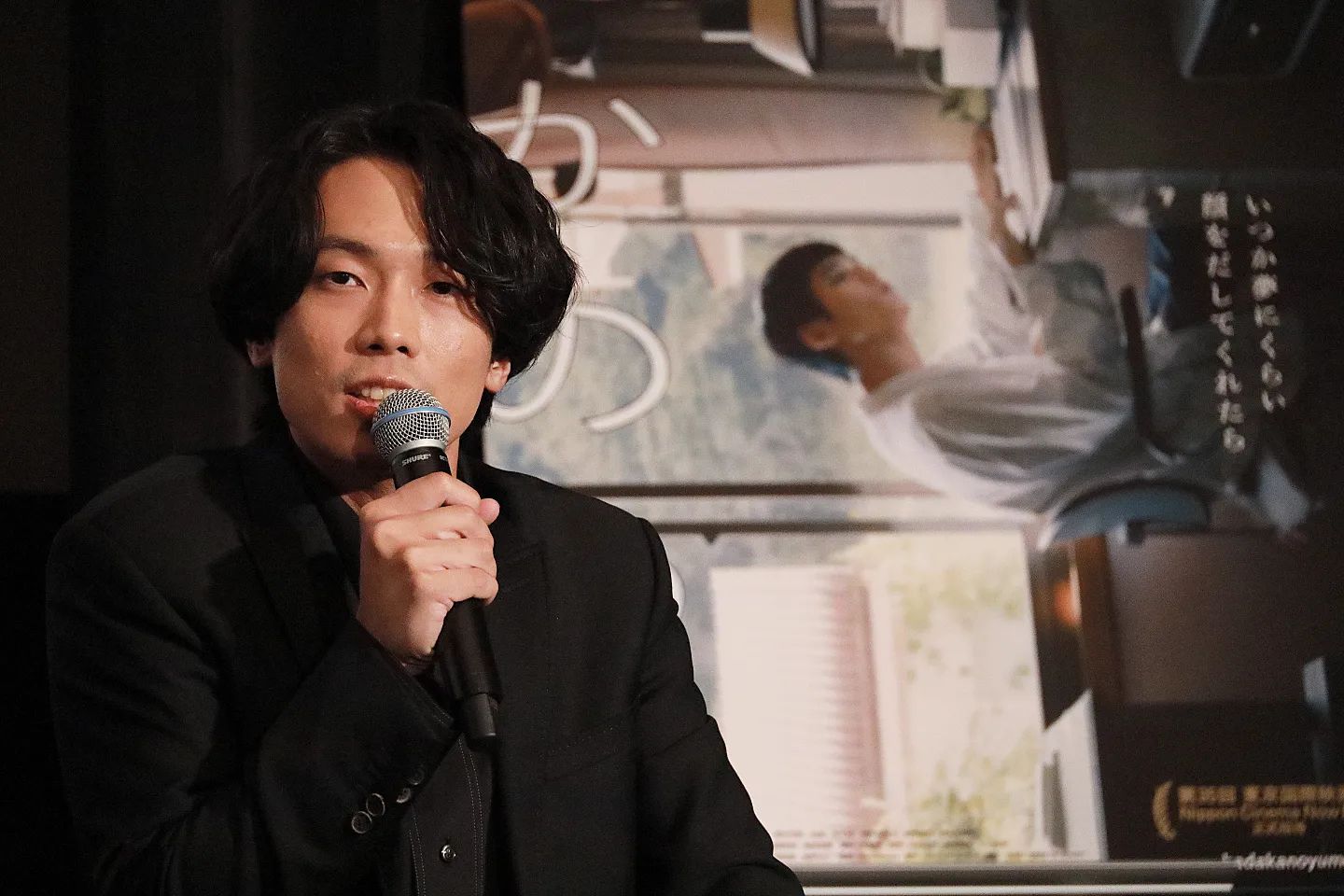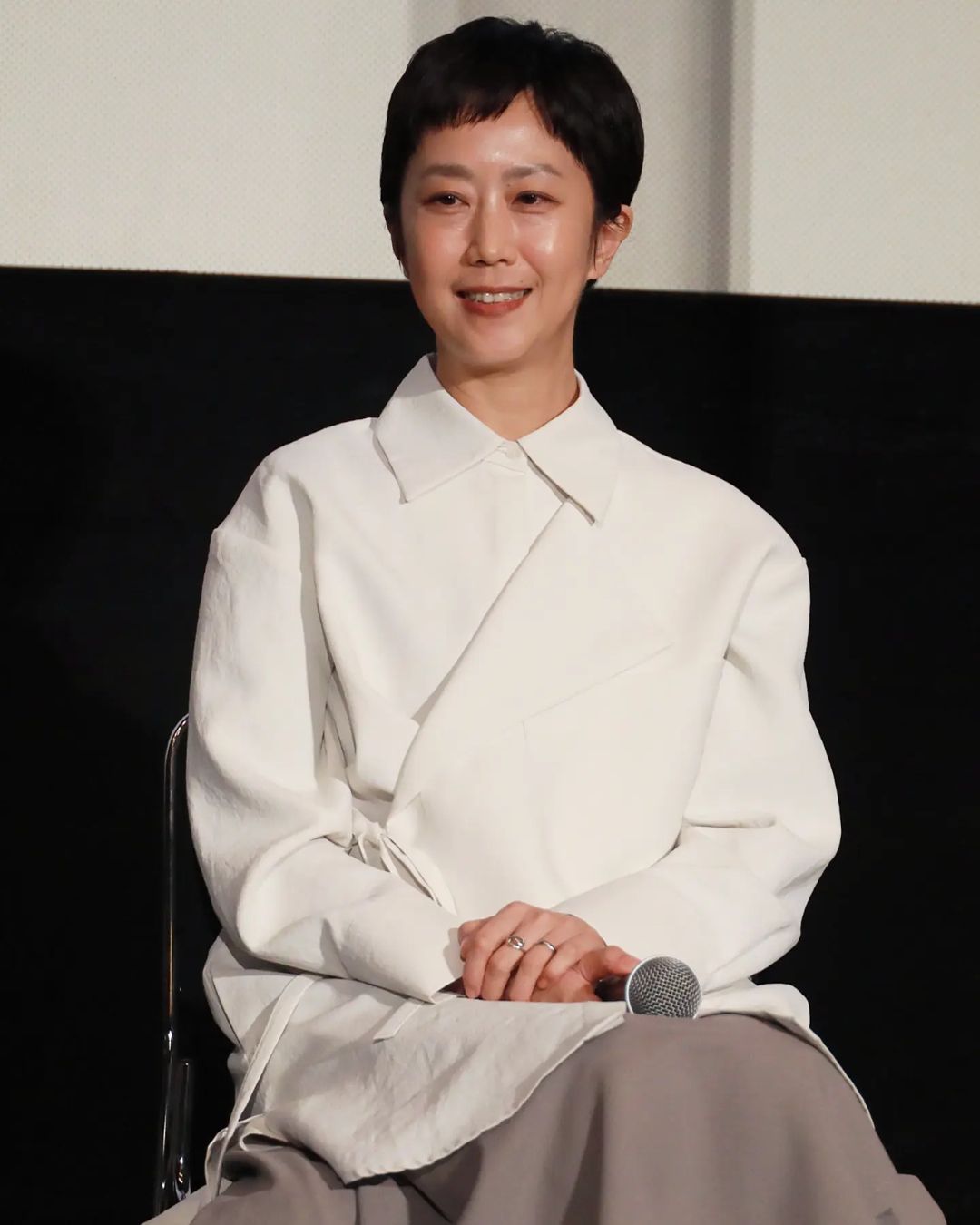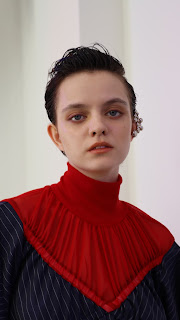"Visit Me in My Dream" (はだかのゆめ/ "Hadaka no Yume" in Japanese) depicts the story of a boy named "Noro" and his mother who is dying at Kochi prefecture, make its world premiere under the Nippon Cinema Now category at 35th Tokyo International Film Festival 2022.
By the courtesy of TIFF, we got an opportunity to have a special interview with director Sora Hokimoto, a film director and J-POP band Bialystocks' vocalist. He will share us about his inspiration and combination of the music and cinema during making his latest film.
inStyle Asia: What is the main reason you decided to make this film?
Sora Hokimoto: I moved to Kochi prefecture about 5 years ago. I have to live with my grandfather and my mother who are illness just like in the film and my mother also resided in Kochi. So, i went back to my mother's hometown and lived together with them. I wanted to record my memories with my grandfather and mother.
inStyle Asia: Can you describe your directing style on your film?
Sora Hokimoto: Talk about the script, when i first moved to Kochi, the first thing i was thinking is, writing down my grandfather's dialogue. My grandfather told me about the stories of the tradition in Kochi by Kochi dialects. I wrote them down and recorded it. I also wanted to show the outsiders' view, so i wrote all about my grandfather's story as an outsider. When I'm directing, because it's such a close story to myself, I delivered the essence between the story and myself. It was what i'm directing the film.
During I'm living in Kochi, I saw how locals living there. I've realized that we're living close to the nature and the weather, for example my grandfather who always stay close with nearby forest, he living with the nature.
At the place in Kochi named Shimanto-shi (四万十市) where its river's water is very clear in Japan, not bounded by the dams. There are low water crossings constructed without parapets in order not to be washed away by floods. It means people don't fight to the nature or natural disasters. It just let them flow naturally. I'm really impressed that kind of mindset and Kochi people.
About the way of directing too, i didn't try to have a very strict schedule. If i did so, i just retelling what had happened in town but i didn't wanted to do that, so i directed by threw away the scripts and moving on by the weather flow. If the weather changed, i can go along with them.
InStyle Asia: All the locations were filmed in Kochi prefecture? Could you tell us the name of the city.
Sora Hokimoto: Yes, we were filming in Shimanto-shi city (四万十市).
inStyle Asia: Please let us know the main reason you casted the mother and son character?
Sora Hokimoto: I saw both of them in other movies, I'm really impressed their voices and movement. This characters must be unique persons among people around them, because we even not sure they're still alive or dead. I really liked them and i asked them to cast for my film. By the way, I didn't describe in detail about mother character in the script.
inStyle Asia: There are two worlds in the film, they're living separately and they can't meet each other so what is your idea about that?
Sora Hokimoto: i was thinking about the present life and life after death.
inStyle Asia: What is your most favourite scene in this film?
Sora Hokimoto: The scene that mother walking and the son came right to touch her body, but he can't touch her. You can see the gap between those two characters. At the same time, i really like the way they're walking, they came to meet and shot from her behind, i really liked that.
inStyle Asia: You using the flames which fishermen traditionally catching the fish, also Japanese Sake and the kids in Kimono. Even the son also tried to play Sumo, a Japanese traditional wrestling sports. You wanted to add the Japanese identities into your film?
Sora Hokimoto: i started to think about making a film when i recorded my grandfather's words as i mentioned before. Those things came up from his words, my grandfather explained about the culture and tradition of Kochi prefecture. Like that Sumo scene, or the way they're using the flame to catch the fish, is a part of Kochi prefecture's culture. I wanted to preserve them and also recorded them into my movie.
That way of catching the fish in Kochi prefecture, is called "Hi-buri-ryo (火振り漁)". They're catching the "Ayu (鮎)", a kind of small fish. Ayu were gathering and attracted by the light. Once the fisherman put the flame near the water, Ayu gathering around the flame, this is how people catch Ayu fish.
InStyle Asia: We saw the scene of incense burning, people talking about living and dead, sometimes we can hear the sound of the water drops, it reminded us the uncertainty concept in Buddhist way of thinking, as well as "Wabi Sabi", a kind of Japanese aesthetic when they are looking a thing changing naturally. You intentionally added this kind of concept in your film?
Sora Hokimoto: I wanted to portray my family who worshipped the dead. Burning incense is a part of it, but i didn't think specifically about Buddhism. It's tradition in my family, the main concept is pray to the dead. I didn't try to portray the Buddhism per se, but it more like i wanted to portray how you are communicating to the dead, how you can have relationship with the dead.
InStyle Asia: At the beginning, you showed a scene where a boy walking on the trail at night, but at the ending, you showed a scene like a boy riding backward on the railway. What is your idea about this two scenes?
Sora Hokimoto: The first scene is represented his LOST, he can't catch the train, too late to catch the train. At the end of the film, he had discovered something. We can feel from his dialogue about the relationship with the dead. You never know where they (dead) are but you "feel" they are existing, may be you got messages from them, it's a feeling, it's not certainty. Moreover, I really wanted the characters and movie add something positive, so at the end, he is able to communicate or got some messages from his mother, that's why he expressed that he FOUND something. In another words, it easily knew that he can accept the death of his mother at the end.
inStyle Asia: Noru, the son wears two kinds of clothes, he wears a beige colour leather jacket at the first part and white shirt from the last half part. Do you have any special meaning from the clothes he wears?
Sora Hokimoto: When we're mourning, we usually wear black color clothes. So i wanted him to show different way of mourning. Wearing white clothes is represented for celebration. For me, going to the grave, is like a celebration and happiness. In the film, you can see a guy drinking Sake, I wanted to portray the different way of mourning in that way, a different way to communicate with dead and also praying for dead.
inStyle Asia: Could you let us know about the soundtrack, it's so beautiful music.
Sora Hokimoto: As a member of a band "Bialystocks", while I'm writing the script for this film, i also writing the music spontaneously. I'm writing the script as it's something I can do only for cinema. I'm writing the music that I can make it only for music. When i finished the music first, the movie is also completed, so i can put them together. For me, these two things can be combined naturally. At the beginning, i'm thinking of compose the music like piano and you can hear the song at the window from the guy nextdoor. I realized that way may break the flow of the story, so i backed to the tradition of string music for the film's soundtrack.
InStyle Asia: How about your next project?
Sora Hokimoto: Originally i happened to make a film about my father's death, not my mother's death. Next one, i would like to focus on the story telling. Telling the story or something not about my life, something that separate from my own-self.
inStyle Asia: Could you tell us what kind of the story you are interested in?
Sora Hokimoto: Now, I had a few ideas about the new film and currently i also have a band. May be the story about the relationship between war and music, or focus on a town and see how it will be developed. I wanted to make a movie with the music as a core.
InStyle Asia: Thank you so much for kindly talked with us. Your music is really beautiful. The sentimental story also catch all people's hearts. We're looking forward to watch your next film soon.
About the film
Synopsis: in a land where the living are dead and the dead are living, reside a grandfather, a mother, and her son, Slowpoke. Slowpoke continues to linger around his mother who is dying but determined to live her life though. This is a story of a mother and son who care about each other so much, and how they try to measure the distance between them.
Director/ Screenplay/Editor: Sora Hokimoto
Cast: Yuzu Aoki, Miako Tadano, Kenta Maeno, Takahide Hokimoto
Released date: 25 November 2022
Spoken language: Japanese
Official Instagram: Visit Me in My Dreams
Official Website: Visit Me in My Dreams
About film director
Sora Hokimoto (1992-) made his feature film debut in 2016 with Haruneko, which was invited to the 46th International Film Festival Rotterdam. In 2019, he formed his band "Bialystocks" and continues to explore different genres.
©PONY CANYON
Image/Text: inStyle Asia











































 CONTACT US
CONTACT US